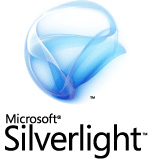Microsoft seeks to redefine RIA with Silverlight

Nearly everyone in the tech industry uses RIA as an acronym for "Rich Internet Applications." But not Microsoft.

Microsoft is targeting media developers attending NAB with two announcements: An update on its rich-media browser plug-in (formerly code-named Windows Presentation Foundation/Everywhere) and the launch of a new digital-content-management system based on SharePoint Server.
While both of these products handle video and audio content that is available over the Internet, Microsoft is highlighting their "interactive," as opposed to their Web-centric, capabilities. (The idstinction isn't all that surprising, given Microsoft's preference for rich clients over Web clients.)
On April 16, Microsoft officials will announce that the company has chosen a final name -- "Silverlight" -- for WPF/E." The first full-fledged beta of Silverlight won't hit for a couple more weeks, however; Microsoft is planning to release that code during its Mix '07 conference, which kicks off on April 30, company officials said. No new word on when the company plans to ship the final Silverlight release. (The original target was to have a "customer-deployable (WPF/E) release" available in the first half of 2007.)
Silverlight is Microsoft's alternative to Adobe's Flash technology. In its first release, Silverlight will support 2D animation, text, vector and image graphics, audio, and video.
Also on the first day of NAB, Microsoft will take the wraps off Microsoft Interactive Media Manager, a digital-content-management extension to SharePoint Server 2007. A server-based product that uses a Web-based interface for accessing and interacting with media files, Interactive Media Manager is due to ship later this month.
Back to the browser plug-in. As Microsoft officials have said previously, Silverlight will work across a variety of platforms and will plug into Internet Explorer, Mozilla and Safari browsers, and will run on systems ranging from desktop PCs to Zune MP3 players and mobile phones. . Silverlight supports SMPTE VC01, the same video standard used by Windows Media Video (WMV).
On the DRM front, "At the discretion of content providers, Silverlight will also deliver digital rights management support built on the recently announced Microsoft® PlayReady™ content access technology– with feature parity on Windows and Mac," according to the Softies' press release.
Microsoft has said little about what kinds of development tools it expects developers and designers to use in building applications that take advantage of Silverlight. Because Silverlight works with a subset of the eXtensible Application Markup Language (XAML) that is at the heart of Windows Presentation Foundation, developers can use Visual Studio to build Silverlight content. And there is a new VC-1 encoder software development kit.
For now, however, the official word is Expression Blend will be Silverlight development tool of choice. Microsoft officials declined to discuss anything to do with development technologies for Silverlight, saying that the company will have more to say on this topic at its Mix conference later this month.